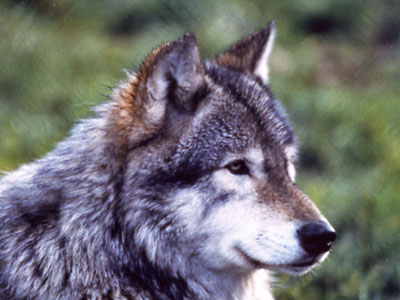In January 2021, the Colorado Parks and Wildlife Commission (CPW) voted to move forward with an adaptive management plan to reintroduce wolves in Colorado.
“We have direction from the voters of Colorado to develop a reintroduction and management plan for gray wolves as transparently and as expeditiously as possible,” said CPW Director Dan Prenzlow. “This authorizes us to move forward in a phased approach that will allow us to be both efficient and flexible as we enact the plan. We will introduce wolves in Colorado no later than Dec. 31, 2023.”
CPW Assistant Director for Aquatics, Terrestrial and Natural Resources Reid DeWalt presented a series of action items for the plan in his presentation to the Commission.
“Our first steps will be to begin a thorough stakeholder engagement process across Colorado to ensure robust participation and input while working to accomplish the needed steps for a successful reintroduction process,” DeWalt said. “The main objectives of our proposed outreach strategy are: gathering and sharing information to build public awareness and promote engagement across the state, designing and implementing an inclusive and transparent process to meet the requirements outlined in Proposition 114, collaborating with technical experts and diverse stakeholders to share knowledge and draft management and conservation strategies, and fostering commitment and collaboration toward plan implementation.”
CPW will hold public meetings across the state to collect input from the public on their questions and concerns regarding wolf reintroduction. In addition, both a Technical Working Group and a Stakeholder Working Group will be created to serve as advisory bodies to the Commission.
The Technical Working Group would initially be responsible for:
Proposing of conservation objectives and management strategies that CPW will incorporate into its draft plan Developing the details of the damage prevention and compensation program.
The Stakeholder Advisory Group will:
Support development of draft strategies by representing a range of viewpoints and geographic areas within the state Make substantive contributions for consideration to the plan(s) developed by the Technical Working Group
Those interested in applying to participate on the Stakeholder Advisory Group or attending public meetings can stay informed through CPW’s Wolf Management Page, social media channels, and eNews newsletters.
The Colorado Parks and Wildlife Commission will serve as the decision-making body for the development of the plan.
From February through May 2021, CPW will hold virtual meetings to share information with the public and stakeholders and to provide opportunities for public input on wolf conservation/management in Colorado.
Proposition 114
Colorado is part of the gray wolf’s native range, but wolves were eradicated from the state by the 1940s.
Over the past decade, the U.S. Fish and Wildlife Service (USFWS) restored gray wolves into Wyoming, Idaho, Montana, New Mexico, and Arizona. Since then, periodic migrations of wolves into Colorado have been documented.
To prepare for any future wolf migrations into Colorado, Colorado Parks and Wildlife created a multi-disciplinary working group that drafted a Wolf Management Plan.
The wolf working group’s recommendations were adopted in their entirety by the Colorado Wildlife Commission at its May 2005 meeting, and affirmed by the Colorado Parks and Wildlife Commission in 2016.
Proposition 114, a ballot initiative directing the Colorado Parks and Wildlife Commission to develop a plan to introduce gray wolves onto the Western Slope of Colorado, passed on November 3, 2020.
Proposition 114 directs the Colorado Parks and Wildlife Commission to:
- Develop a plan to reintroduce and manage gray wolves in Colorado by December 31, 2023, on designated lands west of the Continental Divide
- Hold statewide hearings about scientific, economic, and social considerations
- Periodically obtain public input to update the plan
- Use state funds to assist livestock owners in preventing conflicts with gray wolves and pay fair compensation for livestock losses
Endangered Species Act De-listing
In October 2020, the Department of the Interior (DOI) announced a rule to remove the gray wolf from federal protections under the Endangered Species Act (ESA) nationwide.
State and tribal wildlife management agency professionals will resume responsibility for sustainable management and protection of de-listed gray wolves in states with gray wolf populations.
The U.S. Fish and Wildlife Service (USFWS) will monitor the species for five years to ensure the continued success of the species.
In the United States, gray wolves are distributed across several contiguous U.S. States, with an additional large population in Alaska that was never listed.
Gray wolves in the Northern Rocky Mountains (Wyoming, Montana, Idaho, and eastern portions of Oregon and Washington) were previously de-listed.
Northern Rocky Mountains wolves have expanded into western Oregon, western Washington, northern California, and most recently in northwest Colorado.
The states of Washington, Oregon, and California are in the process of developing of management plans and laws to protect gray wolves.
The Western Great Lakes wolf population in Michigan, Wisconsin and Minnesota is considered to be stable.
Combined, the gray wolf populations in the Northern Rocky Mountains and Western Great Lakes is estimated to total than 6,000 wolves.
sources: Colorado Parks and Wildlife Commission, U.S. Fish and Wildlife Service
